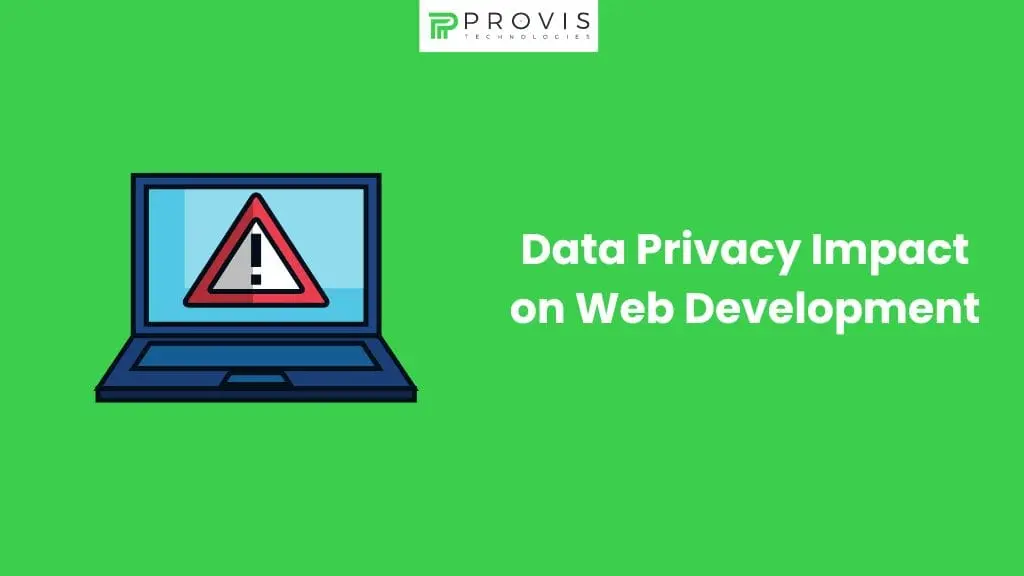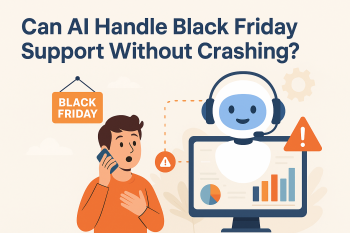How often do you pay attention to data privacy laws while visiting different websites? Data privacy laws have revolutionized how companies handle and maintain user information. Such regulations are both a bane and a boon for web developers.
They navigate the complex world of website design. But how do web design companies reconcile compliance with the laws at hand and users’ needs for practicality, among other things?
This article considers both questions as it discusses data protection laws and their impact on web development tasks, particularly privacy and usability.
Key Data Privacy Regulations
A regulatory compliance approach underscores data collection and management practices. It encourages privacy by design and prevention, as well as exposure and access limitations, and assigns responsibility for data protection. Even though its recommendations target only countries within the EU, it obediently exceeds these limitations in the hearts and operational spheres of many countries, such as Africa.
- Laws are also upheld in California and some neighboring countries, such as CCPA. It is a stand-alone bill of rights as it grants a wide range of liberties to the people exposed to the data collection.
- In countries like India, where GDPR compliance applies, activists from the AIL, who have increasingly curtailed data freedoms recently, and the CCPA in the US, more than Bulgaria, extend those streaks even further.
- For web developers, grasping these regulations is the bottom line to compliance and safeguarding user weapons.
Why Data Privacy Matters in Web Development
Protecting User Trust
It is important to preserve and respect users’ privacy in any interactive platform. Most websites request private data such as email addresses, credit card details, and personal interests. This causes users to lose trust and confidence, hence the degradation of the image and decrease in the audience.
Compliance with Laws
Legislative measures such as GDPR and CCPA have made it compulsory for every business to take care of its consumers’ personal information. One may face heavy consequences and fines and go as far as getting sued by affected societies. Web developers cannot afford to ignore these regulations for the benefit of their companies and clients in the first place.
Enhancing User Experience
Build it and keep it. That is reputational risk mitigation if data protection regulations are observed. Further, the fact that privacy policies, consent forms, and data usage adoption are in place ensures the effectiveness of internet browsing. This goes beyond just creating confidence, but also increases willingness to use the website more.
Preventing Cyber Threats
Proper management of user information and control measures, such as using encryption and housing them off-site in secure facilities, mitigate cyber threats and, in turn, protect users and businesses from losing sensitive data.
Web Development Compliance Challenges
Complex Regulatory Landscape
The increasing proliferation of data protection laws remains one of the most confounding problems encountered by many website developers. For example, various data protection laws, such as the GDPR and the CCPA, vary from one region to another, so developers will have to learn several laws. What may be acceptable in one state may not be implemented in another, hence the inability to design websites that are one-size-fits-all.
Balancing Privacy and Functionality
While attempting to design an application, developers should not focus only on user needs but should find the sweet spot between these needs and the legal provisions in place. Targeted advertisements, analytic tools, and tracking cookies, which are the hidden parts of a web page, should encourage the user to provide information that they usually do not wish to provide, typically invading their privacy. However, this pressure ensures that the application is still usable and compliant with user privacy.
User Consent and Transparency
The law always requires permissions and notifications when data is given or collected, but one does not want to burden the user with excessive annoyance. The challenge is creating straightforward designs of privacy policies and consent forms that meet all requirements while avoiding frustrating users. Users should understand the risks taken; however, those risks should be taken to serve users and conform to the law, which is not typically an easy balance.
Data Security Protocols
Embedding security in a corporate culture as part of web development compliance remains a challenge. Such measures include employing encryption, keeping the database safe, and ensuring developers update software regularly. Some consequences follow an organization whose users’ information is compromised. The consequences will all point to the legal angle.
Don’t Miss:- How Will AI Affect the Design of UI/UX?
Best Practices for Integrating Privacy by Design
- Data Minimization: To prevent unnecessary data accumulation, collect only what is necessary for the functionality of the website and try to have as little sensitive information as possible stored.
- User Consent: Offer hesitation-free, straightforward consent request forms to allow the user to choose their desired preferences regarding the data given.
- Encryption: Strong measures must be taken to ensure that the data is not exposed free, either at rest or in motion.
- Transparency: Develop understandable content related to the privacy policy of each organization for the establishment and notifications on the data process.
- Regular Audits: Regular monitoring of security and compliance in order to rectify identified risks present in the system.
Tools and Technologies for Ensuring Data Security
Using the appropriate tools and technologies safeguards confidential user data and achieves compliance. Here are some of the solutions that developers can apply to improve security.
Encryption Tools
Every system’s cradle is data security, which is Encrypted. Network transmission of information protection through SSL/TLS, for example, aims to protect internet users against external entities by protecting information while in transit. When information cannot be transferred, encryption methodologies like AESC (Advanced Encryption Standard Cipher) address this issue securely.
Firewalls and Security Plugins
Website owners can restrict access to their sites using firewalls and security plugins offered to web developers. Cloudflare and similar services involve using a WAF, which mitigates risks of attacker impersonation in malicious attacks, DDoS, and SQL injections. For instance, the Wordfense plugin provides security review and threat detection features on WordPress websites.
Two-factor authentication (2FA)
Two-factor authentication adds a level of safety to users’ accounts. Applications such as Google Authenticator or Authy help prevent hackers from invading customers’ accounts even after login information has been obtained.
Secure Content Management Systems (CMS)
A secure CMS like WordPress and HubSpot can communicate the website’s protection with built-in operations, regular enhancements, and third-party security plugins.
Impact of Non-Compliance: Legal and Financial Risks
One of a business’s most important aspects is its reputation, and failure to comply with data privacy regulations can cause intolerable legal and monetary impacts. The law offers a frame of reference for the risks that come with failing to respect privacy laws.
1. Legal Consequences
Complying with various regulations, such as the GDPR or CCPA, is not optional for any organization, and hence, resistance invites critical penalties and court cases. For instance, the GDPR Framework imposes penalties of up to €20 million or 4% of a company’s annual global turnover, or whichever is higher. Most of these lawsuits attract compensation payments, which are very expensive and taint the company’s image.
2. Financial Penalties
It is not only the legal fees that business entities have to contend with in the event of breach or noncompliance; for that matter, there are also heavy monetary fines that accompany such. Such penalties are known to deplete the company’s profit margins and stunt its growth prospects. Also, the expense of making recompense and reclamation efforts can easily add an extra burden to the already stretched budget.
3. Reputational Damage
On the other hand, non-compliance can also lead to a loss of customer confidence, hence shrinking or completely losing the market share. Any harm to a company’s image is destructive, may vary in duration, and may adversely reduce the number of new and repeat customers.
Adapting Web Development Strategies for Global Privacy Laws
This tends to be necessary for companies, especially those operating in several territories, as they need to adapt any web development principles according to local privacy regulations. Consistently using the system as intended while being compliant with the rules goes a long way in enabling legal requirements while giving a good user experience.
1. Implementing Regional Compliance Features
Regulations are not necessarily uniform in all countries; therefore, developers should design aspects that will cover specific regions. For instance, the GDPR and CCPA have different rules regarding the acquisition of consent to collect personal data and allow access to such data. Interchangeable consent banners and localized privacy policies allow crossing the Ts and dotting the’s.
2. Global Data Protection Framework
Taking a global measure based on this data protection framework proves beneficial in coping with different privacy legislation. Privacy Management Software and headquarters such as One Trust or TrustArc offer complete privacy management solutions, including consent management, data inventory and mapping, and compliance guides. They bring about an efficient compliance process in instances of multi-jurisdictional activities.
3. Localization of Privacy Policies
Additional, )CIVIL COPY—Create localized privacy policies that pay attention to the needs of each region and the specifications for drafting those policies in every region. This requires changing aspects of the policies to fit with the local languages and be compliant with the law in the respective territory. Therefore, revision of these policies should go hand in hand with the changes in the laws that govern them.
Conclusion
In conclusion, the article emphasized the importance of data privacy laws in the web development. We’ve concluded that everyone worth their name in web development must embrace privacy by design to establish trust and avert risks.
These tools and technologies are effective in enhancing the user’s data privacy while observing the laws. Additionally, orienting and adjusting oneself to various global trends of privacy will assist developers in further development.
Moving forward, developers will have a more effective grip on data privacy complexities and ensure that the web designs created are not only secure for users but also user-friendly and comply with all required laws.
Written By
Author's Picks
- Best Web Development Tools For 2023
- 08/07/2023
- 40+ Unique Website Name Ideas for 2025
- 21/11/2024
- How to Attract Visitors to Fall for Your Website?
- 03/11/2023
Categories
- AI for Startups
- AI in Web Development
- AI Integration
- AI Platforms
- AI Prompt
- AI Tools
- AI Trading Software
- Android App
- Android vs iOS Development
- Angular
- API
- API Development
- App
- app development
- App Idea
- App User Feedback
- Application
- Artificial Intelligence
- Audit Services
- Automotive Industry
- Awards and Recognition
- Business Consulting
- Business Website
- Chatbots
- CRM
- CRM for Financial Advisors
- Custom CRM
- Custom SaaS
- Custom Website
- Customer Service
- dashboard design
- Developing a Mobile App
- Digital Business
- E-commerce
- EMR Integration
- Finance
- Financial Advisors
- Financial Advisors
- GIT
- Health Insurance
- iOS App
- iOS App Development
- IoT Mobile App Development
- IoT Platforms
- IT Audit Services
- IT Consulting
- IT Strategies
- Java Development
- Laravel
- Lean Canvas
- Learning Management System
- Logistics Apps
- Mobile App Development
- MVP
- Native App
- News Aggregator Site
- OTT
- Outsourcing IT
- Payment Gateway
- predictive analysis
- Product Launch Strategy
- Progressive Web App (PWA)
- Prototype
- Recommender Systems
- Ruby
- SaaS
- SaaS Application
- SaaS Business
- SaaS Company
- SaaS Development
- SaaS Product
- SaaS Project
- Sales Funnel
- SEO
- Shopping Cart
- Software Development
- SSL and TLS
- Startup Checklist
- Technology
- Tetradic Color Scheme
- UI/UX Design Company
- Unit Testing
- User Flow
- User Testing
- Web Development
- Web Performance Optimization
- website Maintenance Services
- Website Migration Service
- Website Speed Optimization
- WooCommerce
- WordPress





